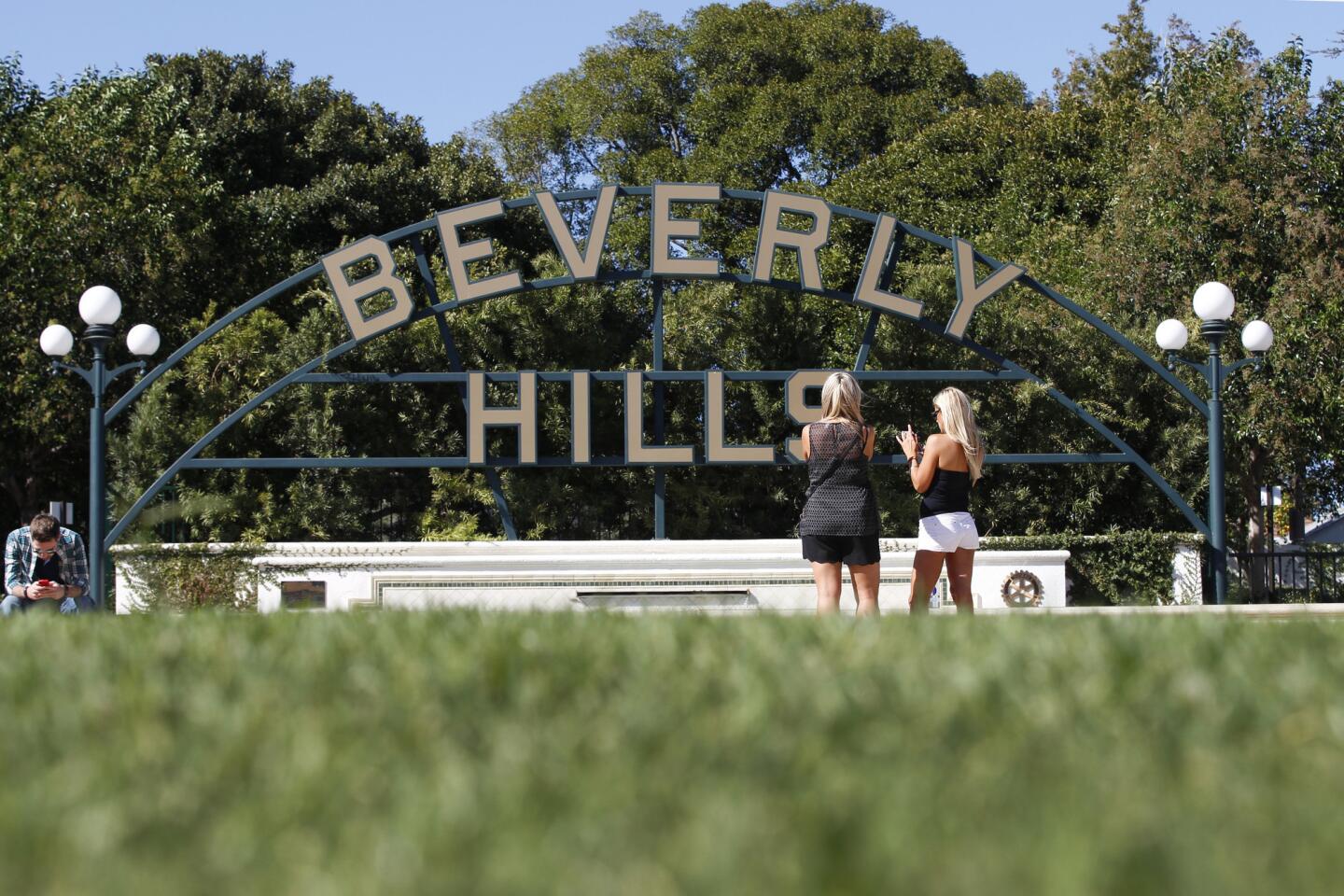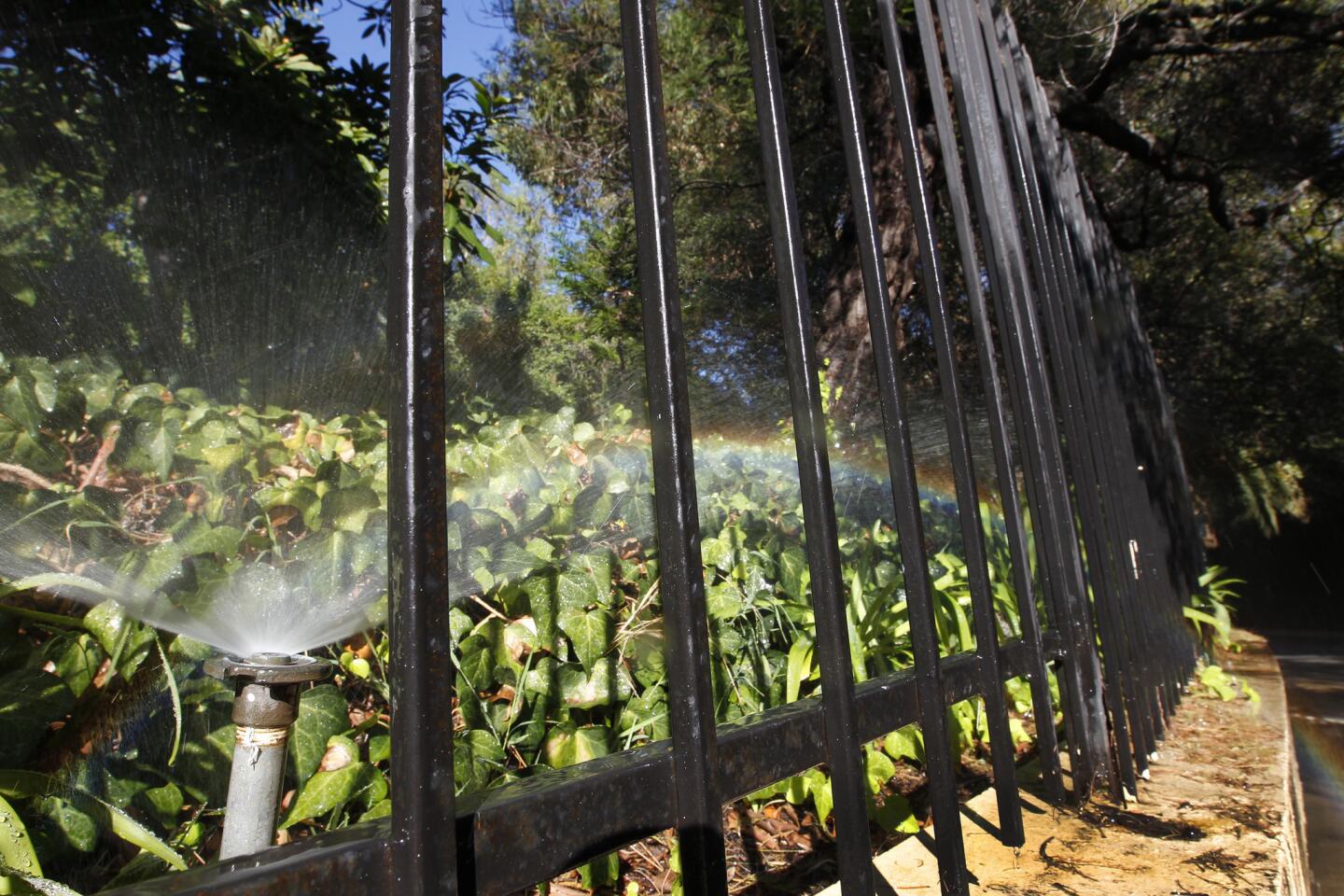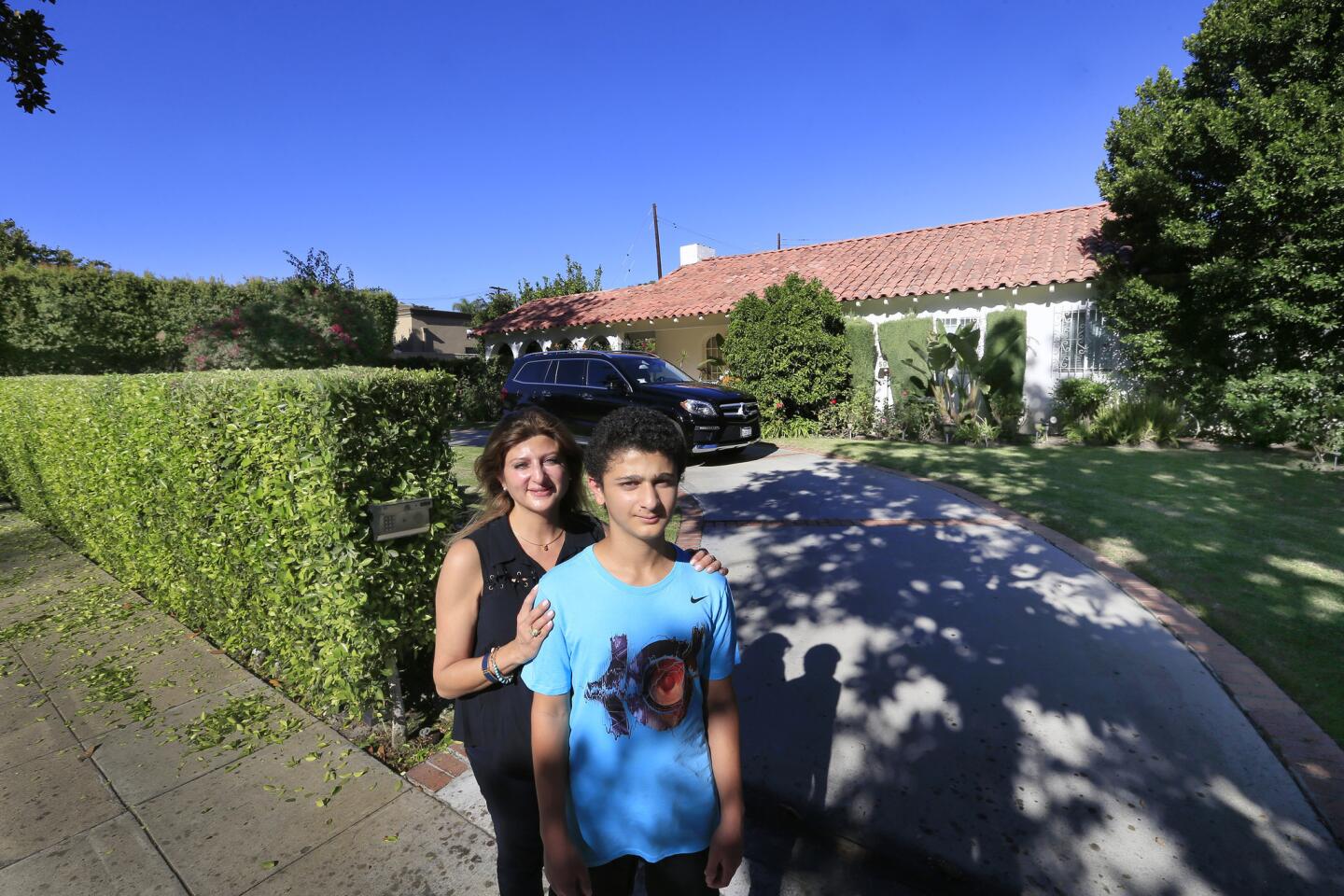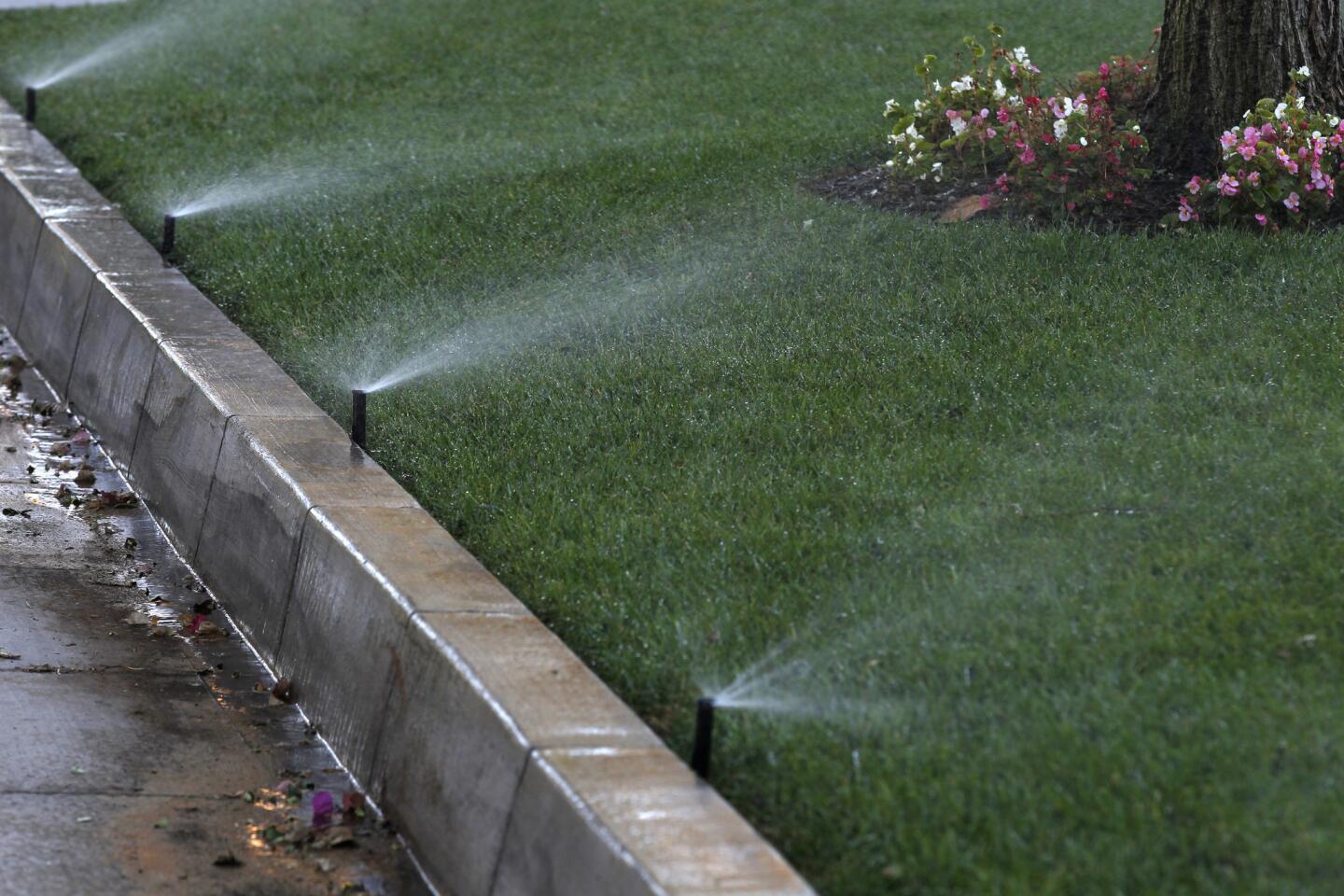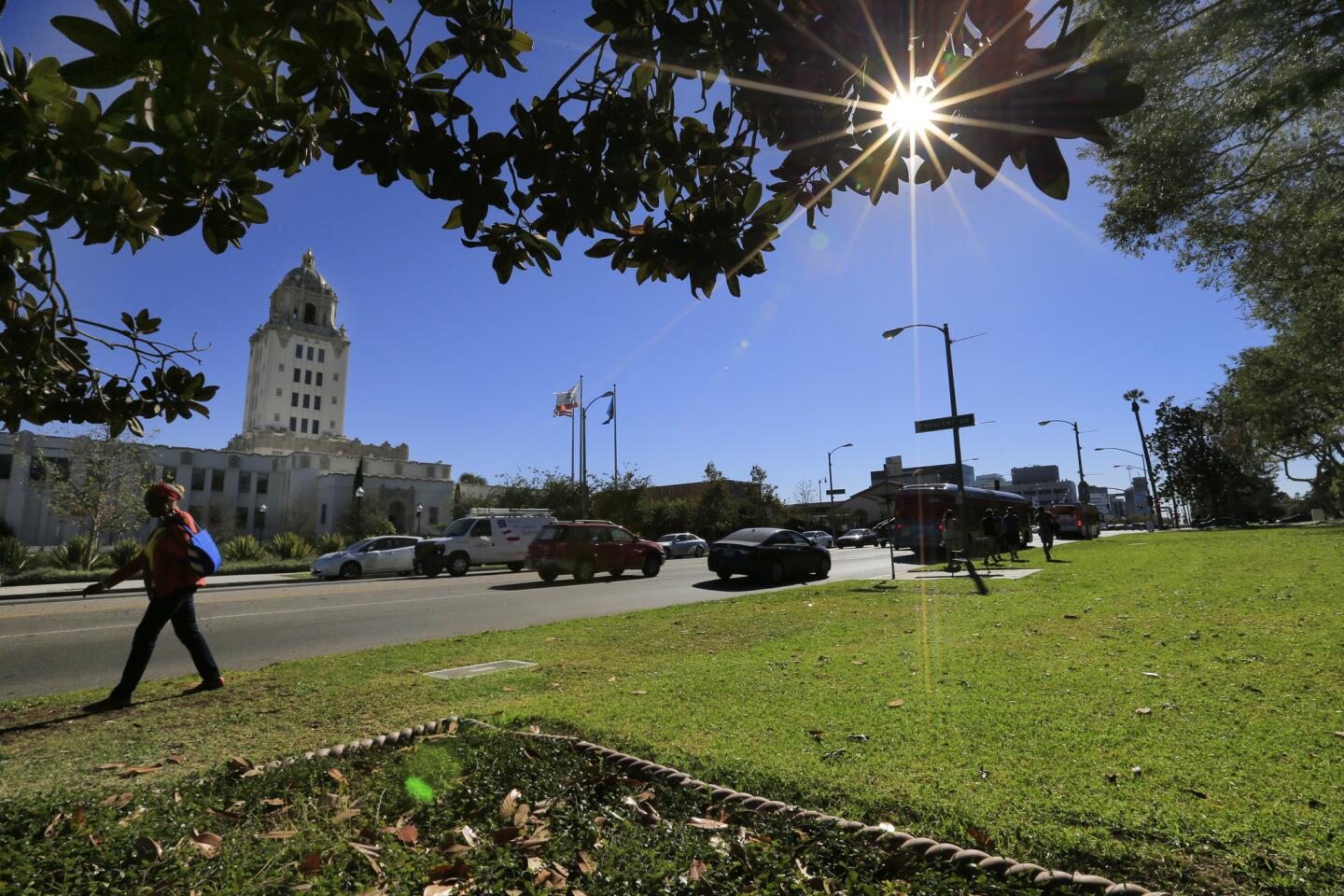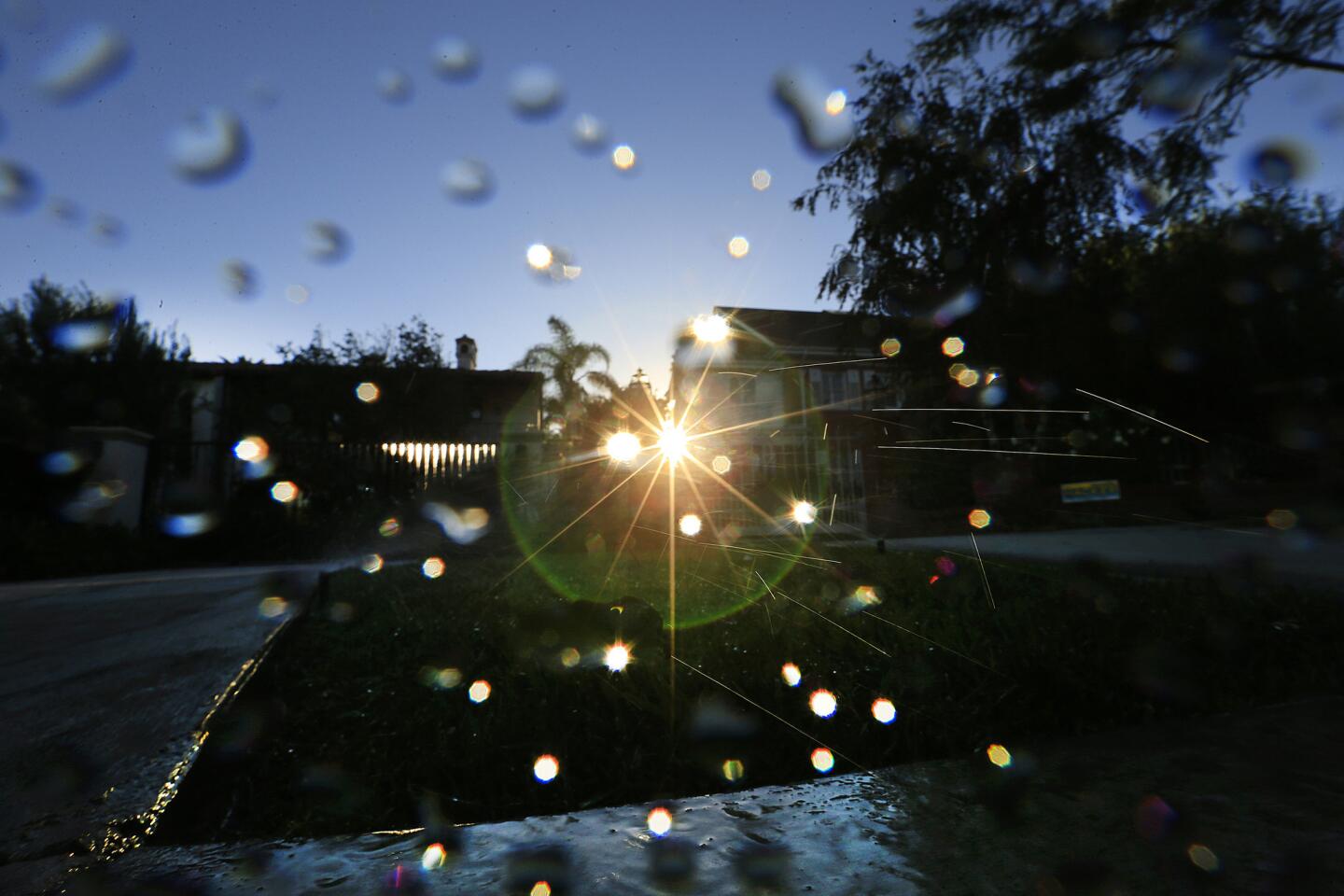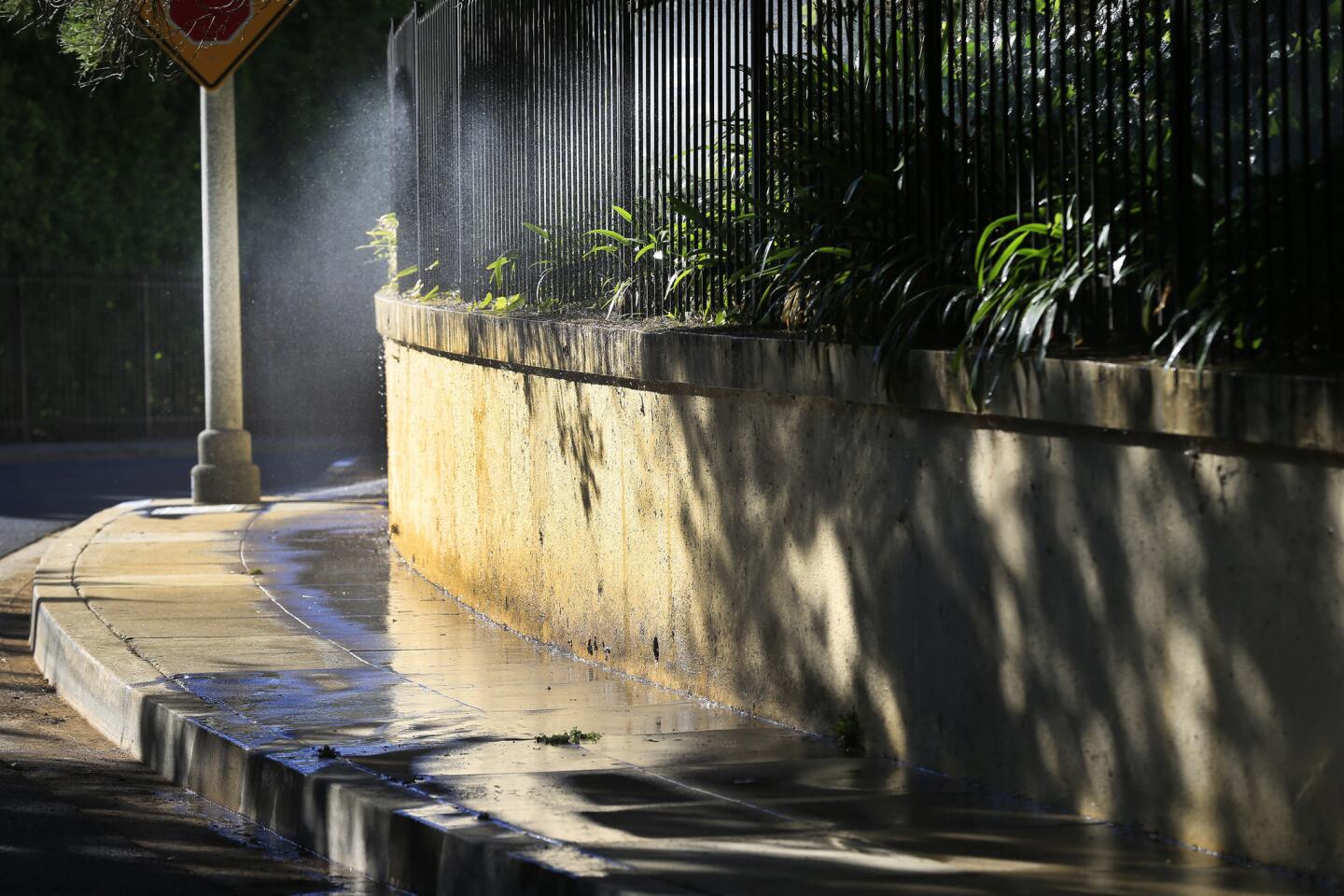Beverly Hills water wasters ‘should be ashamed,’ state regulator says
- Share via
The city of Beverly Hills and three other water suppliers face financial penalties for falling short of state water conservation mandates, officials said Friday.
In addition to Beverly Hills, the cities of Indio and Redlands and the Coachella Valley Water District were issued a $61,000 penalty for failing to meet their conservation mandates, officials said.
Cris Carrigan, director of the Office of Enforcement of the State Water Resources Control Board, said he is “sure” there are water users in Beverly Hills who are “very conscientious and doing their part.”
Water and Power is The Times’ guide to the drought. Sign up to get the free newsletter >>
“To those who aren’t, and are wasting water,” he added, “I’d say yes, you should be ashamed of yourselves.”
Beverly Hills is “very concerned” about falling short of the state’s 32% reduction mandate and is committed to programs such as “new penalty surcharges, hiring additional staff to address water violations and developing individualized conservation programs,” according to a statement released by Cheryl Fielding, the deputy city manager for public affairs.
The statement noted that measures such as penalty surcharges took effect only this month.
“The fines send a message to all Californians that water conservation is a responsibility for each and every one of us,” said Mark Gold, the associate vice chancellor of environment and sustainability at UCLA.
Statewide, Californians cut their urban water use in September by 26.1% compared with the same month in 2013, regulators said. The reduction was below the 27% decline recorded in August and the 31% savings in July.
The statewide conservation effort kept California in compliance with Gov. Jerry Brown’s restrictions for the fourth consecutive month. Earlier this year, Brown ordered cities and towns across the state to slash their water consumption by 25% amid a four-year drought.
In Beverly Hills Friday, lawns and medians and tall hedges wrapping around private homes in the city’s southern neighborhoods had faded to a yellow that would make any water conservationist proud.
But in the mansion neighborhoods to the north, residents continue to water extensively, some residents said.
“Our city’s doing the worst,” said Beverly Hills resident Gianmarco Denis, acknowledging the lackluster water conservation was obvious, as he walked with his mother, Milena, down Beverly Drive into neighborhoods lined with lush medians and towering palm trees, past green parks.
Denis, an 18-year-old student at Santa Monica College, said he’s frustrated with his community and said city officials could be doing a lot more to address the disconnect with the richest segment of the city.
They need to put more pressure on those who are using so much water every day, he said.
“If they were taking it seriously, they would have water police -- or water officials, they could make it sound nicer -- going around really getting people to cut back on how much water they’re using,” said Denis, an 18-year-old student at Santa Monica College.
Marjan Zohoury, who has called Beverly Hills home for about 25 years, said she understands there’s a drought and residents have been encouraged to rip out their grass, “but I just want to know, what is the alternative?”
“Beverly Hills is supposed to be known as the nice, beautiful city,” she said. “If we don’t water the grass, then what? Cactuses? Fake grass? Do people really want that for Beverly Hills?”
Zohoury said she used to water the lawn at her North Crescent Drive home every day but has now cut down to once a week. Still, she doesn’t want her yard to die: “I love waking up to the smell of grass. We’re surrounded by such an artificial world, we have to keep this greenery alive.”
------------
5:45 p.m.: An earlier version of this article said Zohoury lives on Crescent Drive; she lives on North Crescent Drive.
-----------
She said she teaches her kids to turn the water off when brushing their teeth, and that her 11-year-old daughter just finished an essay on water conservation.
As for the fine, Zohoury said, “I don’t think $61,000 for the city of Beverly Hills is a tremendous sum. It’s doable. But they have to find a way to not be fined.”
As the hot summer months give way to cooler temperatures and more rain, officials have cautioned that it may prove harder for Californians to save water.
In order to attain the statewide 25% reduction in urban water use, the board assigned conservation “standards” to each of the state’s 411 urban suppliers earlier this year.
Suppliers with a history of high per-capita water use were ordered to cut as much as 36% off 2013 totals. Suppliers with a history of lower consumption were told to cut as little as 8% or, in rare cases, even 4%.
Despite the good overall results, some individual water districts have struggled to meet their targets. In August, for example, six suppliers missed their mark by more than 15 percentage points. An additional 54 suppliers were off by between five and 15 percentage points.
Regulators met over the summer with some lagging districts and later issued conservation orders to eight of them. The orders demand that the districts take specific steps to save more water.
About 100 suppliers have received so-called information orders requiring them to send more information about the conservation measures they have undertaken, officials said.
Under the drought regulations, water districts that violate a conservation or information order can be fined up to $500 per day. The water board can also send violators a cease-and-desist order, which carries a stiffer penalty: up to $10,000 for each day of non-compliance.
Among the agencies facing fines, Redlands spokesman Carl Baker said in an email that “we were notified late yesterday. Right now I have no comment until we have an opportunity to seek direction from the City Council on Tuesday.”
Coachella Valley Water District had been ordered to reduce overall water use by 36%, but the district has averaged savings of only 27% in the last four months, according to state figures.
“Because our overall numbers have fallen short of the state’s conservation mandate, we are developing new approaches to encourage increased conservation,” said district General Manager Jim Barrett.
Also Friday, Brown declared a state of emergency over the loss of millions of trees across California, the result of a bark beetle infestation made worse by the drought.
Brown asked the federal government to help “mobilize additional resources for the safe removal of dead and dying trees.”
The U.S. Forest Service recently estimated that more than 22 million trees have died in California, Brown said.
Twitter: @ByMattStevens and @rosannaxia
Hoy: Léa esta historia en español
ALSO
Las Vegas outs its water hogs -- at least when asked
Burbank man, 20, ejected from car lands on 5 Freeway sign in Glendale
Fire conditions elevated to ‘extreme’ as gusty winds hit Southern California
More to Read
Sign up for Essential California
The most important California stories and recommendations in your inbox every morning.
You may occasionally receive promotional content from the Los Angeles Times.
